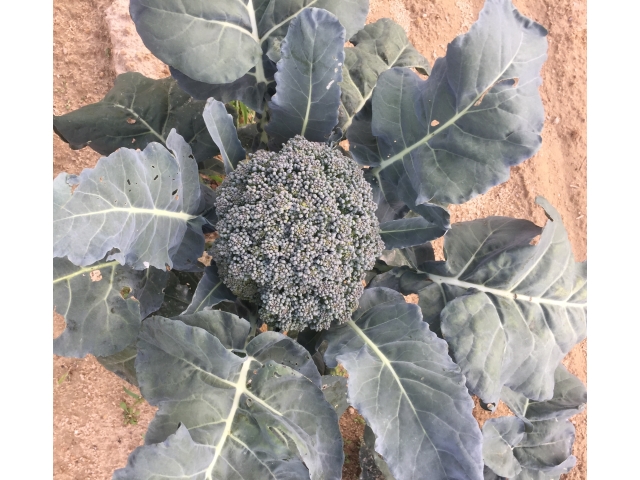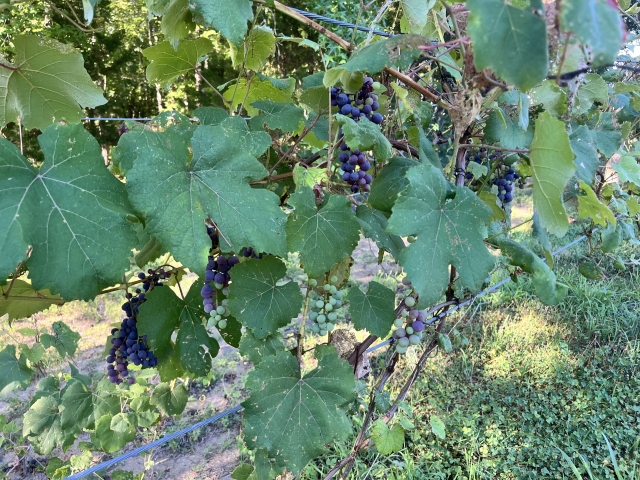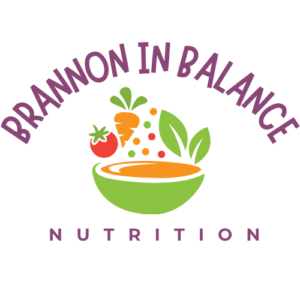
A variety of local goodies from one Saturday morning in 2024. Other local goods can also be found, including honey, breads, and other baked goods. You never know what fun surprises await you! By Brannon Blount
Forget Christmas—around here, the most exciting time of year is when the local farmers markets reopen. There’s just something about those early Saturday mornings, fresh-picked produce, and the chance to support local growers that feels like a celebration of summer.
Even though my dad and I grow a garden every year, I still can’t resist the chance to stock up on all the local, in-season produce I didn’t manage to grow myself. As a dietitian who’s passionate about nutrition – and someone who just genuinely loves food – here are a few reasons I think the farmers market deserves a spot in your weekend routine.
A Labor of Love (That You Don’t Have to Grow Yourself)
Growing anything takes time and effort. It’s a labor of love, especially when it comes to something like a ripe, juicy tomato. I minored in horticulture at Virginia Tech because of the summers I spent gardening with my dad and granddad. I even learned how to make and can salsa from a family friend. The love of fresh and local produce inspired me to become a dietitian.
But you don’t need to have a garden – or a degree – to appreciate the work that goes into fresh, local food. Farmers markets make it easy to enjoy that homegrown quality without the time commitment. You can buy as much or as little as you need, and you’ll walk away with produce that’s usually fresher than what you’ll find in stores.
Why Local Produce Often Tastes (and Feels) Better
Most of the fruits and vegetables you’ll find at a farmers market are picked at or near peak ripeness. Unlike grocery store produce that’s harvested early and shipped in, local market produce is typically harvested just a few days before being sold. That makes a big difference in both flavor and nutrient quality.

What’s in Season Matters
One of the best things about shopping at the farmers market is learning to eat with the seasons. In early spring and early summer, you will find more leafy greens, strawberries, radishes, and herbs. Then, as the summer heats up, tomatoes, melons, corn, squash, and peppers take over. When the temperatures start cooling down into the fall, sweet potatoes, pumpkins, apples, and hearty greens appear. So, plan accordingly to know when these items will be in season.
Common Farmers Market Finds – Why They Deserve a Spot on Your Plate
Tomatoes, a true summer staple around here. Tomatoes come in many shapes, colors, and sizes, and are rich in vitamin C, potassium, and folate. They’re also a great source of antioxidants that support heart health.
Try them sliced with a little salt and pepper, in a tomato sandwich (maybe with light mayo and just one slice of bacon), or chopped into a fresh caprese salad. My go-to? Homemade salsa.
Cucumbers are high in water content and vitamin K, which makes them great for hydration and bone health.
They’re refreshing sliced on their own, tossed into a vinegar-based salad with onion, or paired with tomatoes, peppers, feta, and olive oil for something a little more elevated. I also like making quick refrigerator pickles for a tangy snack.
Peppers (bell and hot varieties) are packed with vitamin C and beta-carotene, which help support the immune system and antioxidant needs.
They’re great grilled, tossed into a stir-fry or omelet, or stuffed with whole grains and beans. Spicy varieties like jalapeños or banana peppers can add flavor and heat to any dish.
Onions and garlic are staples that are easy to find locally and loaded with compounds that may support heart health and reduce inflammation.
Use them to build flavor in soups, sauces, roasted veggie dishes, or dressings. Roasted garlic is one of the easiest (and best) upgrades to your cooking.
Leafy greens (spinach, kale, microgreens, lettuce mixes) from the farmers market are often more tender and flavorful than store-bought. They’re rich in vitamins A, C, and K, as well as iron and fiber.
Try sautéing spinach with garlic, tossing kale into a smoothie, or using microgreens to top avocado toast, sandwiches, or grain bowls.
Squash and zucchini are incredibly versatile summer veggies full of fiber and vitamin C.
Grill them, spiralize them into “noodles,” shred them into casseroles, or bake them into breads and muffins. Smaller ones from the market are often more tender and cook faster.
Berries appear in the markets beginning with strawberries in the late spring/early summer, followed by blueberries, raspberries, and then blackberries in July. Berries offer many health benefits, including supporting heart health, aiding in digestion, and improving brain function. Berries can be easily consumed on their own, incorporated into oatmeal or yogurt bowls, or baked into delicious sweets.
There’s plenty of other produce you’ll find throughout the season – this is just the beginning. Corn, peaches, melons, green beans, eggplant, okra – the list goes on. I picked a few of my personal favorites to highlight, but honestly, every booth has something worth trying. The variety can feel endless, and depending on the week or even the weather, new fruits and veggies will make their debut. If I tried to list them all, I’d end up writing a whole book.
That’s the beauty of shopping local: you get to experience the rhythm of the seasons and see how the offerings shift as the summer rolls on. It keeps things exciting in the kitchen and encourages you to try new recipes or revisit old favorites. So even if your go-to staples aren’t available yet, it’s a great opportunity to explore something different – and maybe discover a new favorite along the way.

Supporting Health – and Local Businesses
Shopping at the farmers market means you’re not only supporting your own health, but also investing in local businesses and sustainable farming practices. Every purchase helps a grower in our region keep doing what they do best.
Now, I’ll be honest – sometimes prices at the market are higher than the grocery store. But you’re also getting fresher, higher-quality produce and directly supporting someone in your community. Many markets also accept SNAP and other benefit programs, so it’s worth asking about options.
How to Make the Most of Your Visit
If you are new to the farmers market scene, don’t be intimidated. Here are a few tips that can help you get started:
- Go early for the best selection. Hours typically range from as early as 7:30 am and go until they run out. During peak season, markets are often open on additional weekdays instead of just Saturdays. Check your local area for hours and dates.
- Bring cash and reusable bags. More vendors are accepting cards now and cash seems so foreign. However, having smaller bills is still helpful and can help alleviate any credit card fees.
- Do not be afraid to ask questions! Most farmers are happy to chat about how something was grown or how to cook it. So do not be shy.
- Be flexible. Go with an open mind and shop what is available rather than sticking to a rigid list. You might be surprised by what you find.

Not Only Local Produce
Farmers markets are not just about local seasonal produce. You can also find a wide variety of local sourced goods. Think homemade pies and other desserts, crusty loaves of artisan bread, jars of local honey, farm-fresh eggs, pasture raised meats, and even handcrafted soaps, candles, and artwork. However, food safety can be a concern due to the lower regulations and potential lack of refrigeration or controlled storage compared to conventional grocery stores. But, these markets help bring together a community of small-scale producers and artisans who pour their heart into their offerings. It’s not just about shopping – it’s about connecting with people behind the products and supporting the local economy in a meaningful way.
Try Something New This Season
Each week, challenge yourself to pick up one fruit or vegetable you’ve never cooked with before. It doesn’t have to be anything wild – maybe it’s a new variety of squash, a different type of lettuce, or a pepper with a name you can’t quite pronounce. Try a new vendor, ask them how they like to prepare it, and give it a go. You don’t need to overhaul your entire diet – just start small and see what you enjoy.
You might be surprised by how much better local can taste, and how quickly a weekly market trip becomes something you look forward to. Shopping this way brings variety to your meals and inspiration to your kitchen, and it reminds us that healthy eating doesn’t have to feel rigid – it can be seasonal, flavorful, and fun.
Supporting the farmers market isn’t just about nutrition. It’s about building community, keeping your dollars close to home, and forming relationships with the people growing your food. It’s about slowing down just enough to appreciate what’s in season and where it came from.
So this summer, give it a try. Start simple. Taste the difference. And maybe – just maybe – bring home something new.

brannon@brannoninbalancenutrition.com
www.BrannonInBalanceNutrition.com































































































